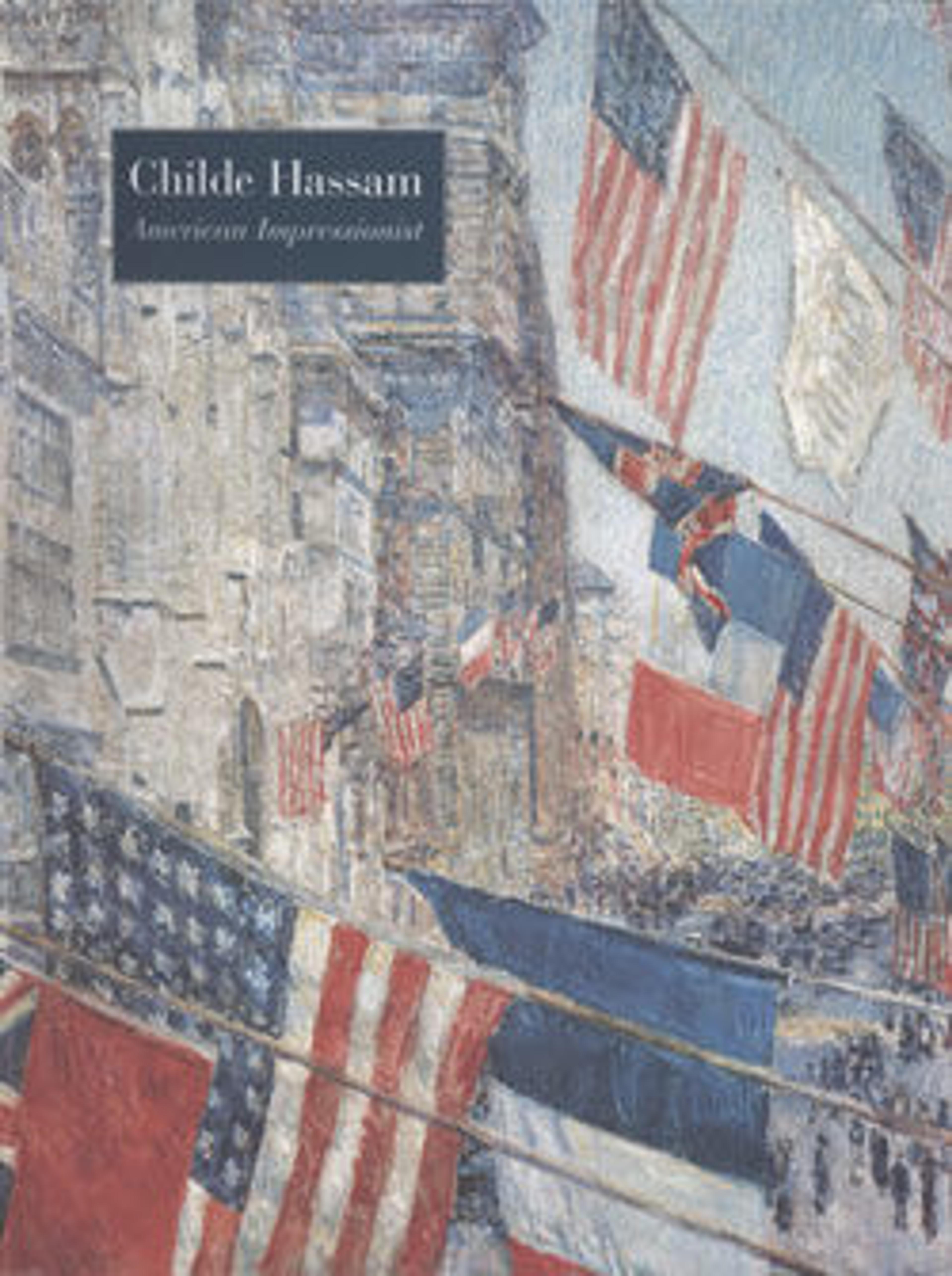Street in Portsmouth
Hassam considered the classic white-frame church to be an essential element of the ideal New England community. He presented such a revered icon in his Church at Gloucester of 1918. Hassam even "restored" a burned church in order to incorporate it into this watercolor, painted during a visit to Portsmouth, New Hampshire, in 1916. The meetinghouse that was actually visible from his vantage point was a Romanesque brick structure with an unadorned pyramidal tower. It had been built just twenty years earlier to replace the first Universalist church on the site, whose white, louvered bell tower closely resembled the structure that commands the distance in Hassam's watercolor.
Hassam responded not just to fine Federal churches; even the simplest buildings could inspire him. The three-story clapboard house in this watercolor was built about 1810 near the South Mill Pond. Hassam presented the unpretentious house and its neighbor, with their white picket fences and elm trees framing the distant church and a glimpse of the water, as a microcosm of New England.
Hassam responded not just to fine Federal churches; even the simplest buildings could inspire him. The three-story clapboard house in this watercolor was built about 1810 near the South Mill Pond. Hassam presented the unpretentious house and its neighbor, with their white picket fences and elm trees framing the distant church and a glimpse of the water, as a microcosm of New England.
Artwork Details
- Title: Street in Portsmouth
- Artist: Childe Hassam (American, Dorchester, Massachusetts 1859–1935 East Hampton, New York)
- Date: 1916
- Culture: American
- Medium: Watercolor on off-white wove paper
- Dimensions: 15 1/8 x 22 in. (38.4 x 55.9 cm)
- Credit Line: Rogers Fund, 1917
- Object Number: 17.31.2
- Curatorial Department: The American Wing
More Artwork
Research Resources
The Met provides unparalleled resources for research and welcomes an international community of students and scholars. The Met's Open Access API is where creators and researchers can connect to the The Met collection. Open Access data and public domain images are available for unrestricted commercial and noncommercial use without permission or fee.
To request images under copyright and other restrictions, please use this Image Request form.
Feedback
We continue to research and examine historical and cultural context for objects in The Met collection. If you have comments or questions about this object record, please contact us using the form below. The Museum looks forward to receiving your comments.
